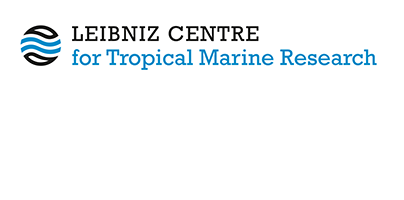Stable isotope composition of particulate organic matter and zooplankton in North-East Brazilian shelf waters.
Schwamborn, Ralf, Voss, Maren, Ekau, Werner  ORCID: https://orcid.org/0000-0002-4844-9654 and Saint-Paul, Ulrich
(1999)
Stable isotope composition of particulate organic matter and zooplankton in North-East Brazilian shelf waters.
Archive of Fishery and Marine Research, 47
(2/3).
pp. 201-210.
ORCID: https://orcid.org/0000-0002-4844-9654 and Saint-Paul, Ulrich
(1999)
Stable isotope composition of particulate organic matter and zooplankton in North-East Brazilian shelf waters.
Archive of Fishery and Marine Research, 47
(2/3).
pp. 201-210.
|
Text
Schwamborn.PDF - Published Version Restricted to Registered users only Download (1MB) |
Abstract
Particulate organic matter (POM) and zooplankton (> 300 μm) were sampled at 15 stations along five transects off north-Eastern Brazil during the dry season. Additionally, samples were taken from the Itamaracá Estuarine System (IES), near Recife, for comparison. The data on naturally occurring stable isotopes suggest that export of POM from the IES was restricted to the reef line. This was evident by a maximum of δ13C on the inshore shelf (app. 6 to 15 km offshore). There was no measurable estuarine influence on δ13C of POM and zooplankton on the shelf. No significant differences were observed in δ13C and δ15N between the samples taken at shelf stations off Pernambuco and Ceará states, although mangrove cover in Pernambuco is more than 10 times higher than in Ceará. δ13C values of shelf zooplankton varied between -19.8 and -16.3 %o PDB. The difference in δ13C between zooplankton and POM was 4.2 ± 1.8 %0. Decapod crustacean larvae showed δ13C values between -19.8 and -17.2%o PDB. Copepods had δ13C values between -19.5 and -18.7%o PDB. The differences in δ13C between copepods and chaetognaths found inshore and offshore were 1.1 and 1.0%o PDB, respectively. After "C/N-correcting" δ13C values, zooplankton still had significantly higher values than POM. POM δ15N varied between 1.6 and 5.6%o. Zooplankton was significantly higher in 15N compared with POM at estuarine and shelf stations. The difference in δ15N was 3.2%o. Decapod larvae showed relatively low δ15N values (similar to or even lower than zooplankton subsamples), indicating a relatively low trophic position. δ13C values of decapod larvae were generally close to the values measured for the oceanic copepod community, indicating a similarity in the utilization of pelagic primary carbon sources.
| Document Type: | Article |
|---|---|
| Programme Area: | PA Not Applicable |
| Research affiliation: | Ecology Ecology > Fisheries Biology |
| Refereed: | Yes |
| Open Access Journal?: | No |
| ISSN: | 0944-1921 |
| Date Deposited: | 30 Sep 2025 16:32 |
| Last Modified: | 30 Sep 2025 16:33 |
| URI: | https://cris.leibniz-zmt.de/id/eprint/5725 |
Actions (login required)
 |
View Item |





 Tools
Tools Tools
Tools